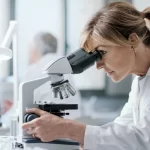
- 0 Comments
- PRMA Plastic Surgery
If you’re experiencing a firm lump or area of discomfort in your reconstructed breast, you’re not alone—and it’s okay to feel anxious. Fat necrosis, though understandably concerning, is a relatively common occurrence after natural tissue breast reconstruction, like the DIEP or PAP flap procedures. It happens when transplanted fat areas begin forming benign, scar-like tissue. But this isn’t your fault, and it doesn’t mean something is “wrong” with your reconstruction.
Fortunately, fat necrosis is manageable, and there are effective options to address it if needed. By understanding the symptoms and treatment options of fat necrosis, you can reclaim control and take the next steps toward restoring confidence.
What Is Fat Necrosis After Breast Reconstruction?
Sometimes, after a tissue-based breast reconstruction, the fat in the flap doesn’t receive enough blood flow. Over time, this fat may be replaced by scar tissue that can feel like a hard lump, known as fat necrosis. This lump might be the size of a pea, or a larger and harder mass. Typically, this lump isn’t noticeable until 6-8 months after surgery, when the swelling from the tissue flap has subsided.
Smaller regions of fat necrosis can sometimes disappear on their own. Larger areas of fat necrosis, however, can be uncomfortable and painful, and even distort the shape or texture of the breast.
Signs of Fat Necrosis After Breast Reconstruction
With any condition, recognizing the signs of fat necrosis early is essential—not only for peace of mind but also for ensuring your reconstruction journey stays on track. If you notice any changes in your body, don’t hesitate to contact your care team immediately.
Some common signs and symptoms of fat necrosis to watch for include:
- A firm lump or area of hardness in the reconstructed breast
- A tenderness or mild pain in the affected area
- Skin dimpling or contour changes over the lump
- Redness or warmth over the area (less common)
- A “knot” or localized swelling that doesn’t resolve over time
Autologous Reconstruction Complications: How Is Fat Necrosis Diagnosed?
A surgeon will combine a physical examination with imaging to diagnose fat necrosis. They will also carefully assess the lump by touch to understand its texture and location. To confirm the nature of the lump and rule out other causes, your surgeon may recommend an ultrasound or mammogram, and sometimes, a biopsy may also be performed to determine if the lump is fat necrosis.
Treating Fat Necrosis After Breast Reconstruction
If you suspect you have fat necrosis after breast reconstruction, effective treatment options are available. Your surgeon will help determine which approach is best based on your individual case and needs.
Excision
Excision involves surgically removing the area of fat necrosis. Excision is often recommended when the lump is bothersome or causing significant contour changes. The benefit of this approach is that removing the hardened fat tissue helps restore a smoother breast shape and alleviates any discomfort associated with the lump.
Liposuction
Liposuction can remove fat necrosis after breast reconstruction, especially when the affected area is softer and more diffuse. This approach’s advantage is its ability to remove the necrotic tissue while maintaining a smoother contour, reducing the risk of visible depressions or “divots” in the breast shape.
Fat Grafting Or Minor Flap Reconstruction For Aesthetic Correction
In cases where fat necrosis causes noticeable contour irregularities or volume loss, fat grafting (transferring fat from another area of the body) or a minor flap reconstruction can be performed. These techniques restore volume and smooth out the breast’s appearance, helping to achieve a natural, symmetrical look and feel.
Talk to PRMA About Managing Fat Necrosis and Your Breast Reconstruction
If you’ve had breast reconstruction surgery and you’re noticing signs of fat necrosis, don’t wait to get an evaluation. The board-certified surgeons at PRMA Plastic Surgery are here to ensure you get the prompt diagnosis—and treatment—you need to feel your best self again.
Schedule a consultation today and take back control of your health.

